A Subjectively Obscure SciFi Primer: Charlie Jade
- November 24th, 2014
- Posted in A Subjectively Obscure SciFi Primer
- Write comment
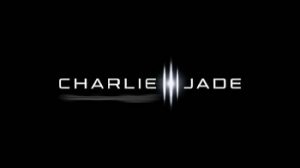 We’re trying a new column this week, with the goal of introducing some of the lesser known sci-fi TV series to a wider audience who might be looking for new shows after binging on more popular works like Star Trek or Battlestar Galactica. As such, my intent is to do these with as few spoilers as possible, while still addressing the main points of interest. We’ll be starting off by looking at Charlie Jade, a 2005 television series that was filmed and set in South Africa, lasting only one season. For this, I’m going to use a rating system, where a 5 represents must-see, 4 is good, solid television, 3 is “cult classic” stage, where the show’s appeal is likely limited to a specific group, 2 is flawed, but fun, or even “so bad it’s good,” and a 1 is avoid at all costs.
We’re trying a new column this week, with the goal of introducing some of the lesser known sci-fi TV series to a wider audience who might be looking for new shows after binging on more popular works like Star Trek or Battlestar Galactica. As such, my intent is to do these with as few spoilers as possible, while still addressing the main points of interest. We’ll be starting off by looking at Charlie Jade, a 2005 television series that was filmed and set in South Africa, lasting only one season. For this, I’m going to use a rating system, where a 5 represents must-see, 4 is good, solid television, 3 is “cult classic” stage, where the show’s appeal is likely limited to a specific group, 2 is flawed, but fun, or even “so bad it’s good,” and a 1 is avoid at all costs.
Now, let’s get right into it. Charlie Jade briefly aired on the Syfy channel in 2008, but otherwise isn’t very well known. The show follows the eponymous Charlie Jade, a private detective in the cyberpunk style dystopia of Cape City (yes, city). The world has been cut up and is now controlled by five megacorporations, with Vexcor being the one in charge of Africa. A strict caste system is in place (I know, castes in South Africa! Who’d have guessed?), which affords Charlie some luxuries, but it’s still far from a pleasant life. The story begins with his hunt for a man named 01-Boxer, which leads him to a secret Vexcor facility. Unfortunately for him, the facility is conducting a dangerous experiment, which a group of terrorists, led by a woman named Reena, have set out to stop from the other end. Their bomb goes off, and his surroundings change–the experiment had attempted to create a wormhole, which temporarily bridged the gap from Charlie’s universe (the so-called “Alphaverse”) to another universe, the ecologically-minded “Gammaverse”, which is where Reena’s bomb was located. Both of them end up in a world stuck in the middle, the Betaverse–AKA our reality. Charlie meets up with a journalist named Karl, and together they must find out the truth behind Vexcor’s experiments in order for him to return home.
To make this simple, and I’m just going to break it down into pros and cons.
The Good:
- The story is spread out across all three universes. The relationship between universes is complex, not simply Alphaverse bad future, Gammaverse good future. Scenes set in each universe typically begin with a subtitle for clarification, but can usually be distinguished by visual style alone: the Alphaverse has a sickly green color to it, the Betaverse has a more blue-centered palette, and the Gammaverse is reddish. The mystery is quite interesting, and since there aren’t really any shows with similar plots, it has a fresh quality to it. It’s not Sliders, that’s for sure.
- The show’s style is gritty, and draws from a lot of sources. The Alphaverse is clearly very Blade Runner inspired, which even the writer’s notes that have been released on the web admit. The character of “Sew Sew” seems to be an homage to Graff in acknowledgment of this. Charlie is clearly from the Film Noir school of hardboiled detectivework, complete with the trench coat. For someone who’s been wanting some cyberpunk in their life, this is it.
- Given that the only work from South Africa that most sci-fi fans might be familiar with is District 9, one might expect them to bear some similarities. They really don’t, however; Charlie Jade is quite a different beast. The editing alone… well, let’s save that for the moment.
- The acting is mostly good, much better than you might expect given the oddities surrounding its production. Both Charlie himself and his nemesis, 01 Boxer, are well acted, often carrying their scenes. 01 in particular is a complicated character who easily could have been botched in casting.
The Bad:
- The visual style is completely bizarre. The show’s creators have explained it a bit as an experiment away from the traditional, and boy is it ever. Without giving too much of a film theory lesson, most movies and television shows use a style called continuity editing, which is designed to make everything as clear and easy to understand for the viewer as possible. It helps to maintain spacial orientation and a sense of time. Put simply, there’s a reason it’s the standard. Charlie Jade throws the standards out the window and dances on the grave of whatever is left. Their attempts at experimentation may be admirable to some, but a television series is probably not the medium for it. Charlie Jade uses jump cuts, often replaying the same words two or three times in succession for emphasis, and sometimes from wildly different angles. Many cuts are very hard and it can be quite distracting, even for those who aren’t versed in film theory. When you combine this with the tendency towards very unusual camera angles and the color tinting, it can really take you out of the story. It’s not for everyone.
- While the story as a whole is strong, individual episodes can be a little weak sometimes. It’s a very arc-based show, so while the mystery slowly unravels, some of the other material comes across as filler. I enjoyed Charlie’s character, so I didn’t mind it very much, but your mileage may vary. Other subplots that focused on less interesting characters were far more likely to become grating, such as most scenes dealing with Charlie’s girlfriend back in the Alphaverse.
- Which brings me to what is probably the show’s biggest problem, editing not withstanding: its treatment of female characters. This bullet point is going to get a little spoilery, so here’s your warning. There are four major female characters in the show: Charlie’s girlfriend, Jasmine, the “terrorist” Reena, corrupt Vexcor executive Essa Rompkin, and a Betaverse police officer named Blues. Jasmine is in the Alphaverse’s lowest caste and her connection to Charlie is the only thing keeping her safe, so after he disappears, she’s treated as a slave and essentially becomes a prostitute for most of the series. Reena is captured almost as soon as she arrives in the Betaverse and is tortured for several episodes in a row, leaving us with some very uncomfortable scenes to sit through. Essa… well, corrupt corporate executive says it all, doesn’t it? This leaves the only female character who isn’t tortured, exploited, or evil as Blues, who only has a major role to play near the end of the series. It could be argued that this is an artifact of the show’s Noir influences; that genre has always had a distrust of women (seen most famously in the Femme Fatale archetype), but there’s really not much excuse for it these days.
- Also the show shares a name with a clothing manufacturer which makes it really annoying to Google. That’s not really a negative but it sure isn’t a good thing, either.
Overall, I would rate the show three and a half out of five, and whether you personally round that half up or down is going to depend on your tolerance for the strange editing and opinions on female characters. While it’s only one season long, the ending isn’t as abrupt as, say, Firefly, nor is it a total cliffhanger, like with Stargate Universe. The show is definitely worth a watch, and you can find it in its entirety for free on Hulu right now (UPDATE July 2016: It’s no longer available on any major streaming sites, unfortunately), although you’ll need an account to get past the age gate. There are very few shows to compare it to, so give it a shot and see what you think.
Since this was a first try at this type of article, I welcome any input for how it could be improved next time. So, do you have any suggestions? Or are there any little known shows you’d like for me to cover? Leave them in the comments, or send a tweet to @RetroPhaseShift. To be notified of the next entry in the Subjectively Obscure Sci-Fi Primer, you can subscribe to the RSS feed by clicking here. And if you’ve watched Charlie Jade and enjoy it, you can read about the plans for season 2 here.


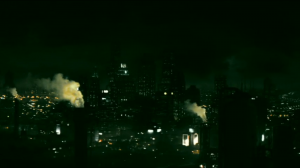



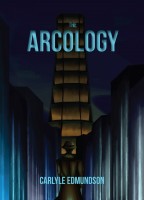
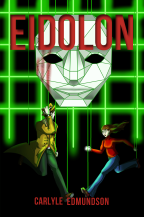
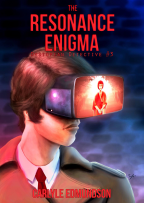
No comments yet.